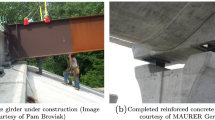Summary
An elastomeric bushing is a device used in automotive suspension systems to cushion the loads transmitted from the wheel to the frame of the vehicle. A bushing is essentially an elastomeric hollow cylinder which is bonded to a solid metal shaft at its inner surface and a metal sleeve at its outer surface. The shaft is connected to the suspension and the sleeve is connected to the frame. The elastomeric cylinder provides the cushion when it deforms due to relative motion between the shaft and the sleeve. The relation between the force or moment applied to the shaft or sleeve and the relative displacements or rotations is nonlinear and exhibits features of viscoelasticity.
A force(moment)-displacement(rotation) relation for elastomeric bushings is important for multibody dynamics numerical simulations. A boundary value problem for the bushing response leads to a relation which requires extensive computation time to implement and is hence unsuitable. In a separate study, a force(moment)-displacement(rotation) relation for single mode response has been proposed which can be used in multi-body dynamics simulations. The relation is expressed in terms of a force (moment) relaxation function for the bushing, and a method for its determination by experiments on bushings has been presented. The applicability of this relation for torsional mode bushing response is evaluated in the present work.
A boundary value problem is formulated for torsional mode bushing response. Numerical solutions of the boundary value problem represent the exact bushing response and act as numerically generated experimental data. The proposed moment-rotation relation is constructed using this data. Numerical solutions of the boundary value problem also allow for comparison between the exact moment-rotation behavior and that predicted by the proposed model. It is shown that the method for determining the bushing relaxation function and the predictions of the proposed moment-rotation relation are in very good agreement with the exact results.
Similar content being viewed by others
References
Ledesma, R., Ma, Z.-D., Hulbert, G., Wineman, A.: A nonlinear viscoelastic bushing element in multibody dynamics. Comp. Mech.17, 287–296 (1996).
Adkins, J. E., Gent, A. N.: Load-deflexion relations of rubber bush mountings. Br. J. Appl. Phys.5, 354–358 (1954).
Morman, K. N., Jr., Kao, B. G., Nagtegaal, J. C.: Finite element analysis of viscoelastic elastomeric structures vibrating about non-linear statically stressed configurations. Fourth International Conference on Vehicle Structural Mechanics, Society of Automotive Engineers, Detroit, MI, 83–92 (1981).
Wineman, A., VanDyke, T., Shi, S.: A nonlinear viscoelastic model for one dimensional response of elastomeric bushings. Report of the Ford Durability Center, Department of Mechanical Engineering and Applied Mechanics, University of Michigan (1995).
Coleman, B. D., Noll, W.: Foundations of linear viscoelasticity. Rev. Modern Phys.33, 239–249 (1961).
Lianis, G.: Constitutive equations for viscoelastic solids under finite deformation. Purdue University Report AA&ES 63-11 (1963).
Goldberg, W., Bernstein, B., Lianis, G.: The exponential extension ratio history, comparison of theory with experiment. Purdue University Report AA&ES 67-1 (1967).
McGuirt, C. W., Lianis, G.: The constant stretch rate history, comparison of theory with experiment. Purdue University Report AA&ES 67-2 (1967).
Goldberg, W., Lianis, G.: Behavior of viscoelastic media under small sinusoidal oscillations superposed on finite strain. Purdue University Report AA&ES 67-3 (1967).
McGuirt, C. W., Lianis, G.: Constitutive equations for viscoelastic solids under finite uniaxial and biaxial deformations. Trans. Soc. Rheol.14, 117–134 (1970).
Flowers, R. J., Lianis, G.: Viscoelastic tests under finite strain and variable strain rate. Trans. Soc. Rheol.14, 441–459 (1970).
Pipkin, A. C., Rogers, T. G.: A non-linear integral representation for viscoelastic behavior. J. Mech. Phys. Solids16, 59–72 (1968).
Lee, S. B.: A study of a nonlinear viscoelastic model of elastomeric bushing response. Ph. D. Thesis, The University of Michigan, Ann Arbor (1997).
Faires, J. D., Burden, R. L.: Numerical methods. 270–312. Boston: PWS 1993.
Dennis, J. E., Jr.: Nonlinear least squares and equations. The state of the art in numerical analysis. (Jacobs, D., ed.) pp. 269–312. New York: Academic Press 1977.
Dennis, J. E., Jr., Schnabel, R. B.: Numerical methods for unconstrained optimization and nonlinear equations, pp. 218–238. New Jersey: Prentice-Hall 1983.
Author information
Authors and Affiliations
Rights and permissions
About this article
Cite this article
Lee, S.B., Wineman, A. A model for nonlinear viscoelastic torsional response of an elastomeric bushing. Acta Mechanica 135, 199–218 (1999). https://doi.org/10.1007/BF01305752
Received:
Revised:
Issue Date:
DOI: https://doi.org/10.1007/BF01305752




